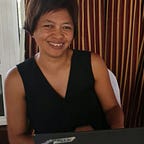Winds of hope in southern Madagascar
WFP provides life-saving cash assistance to people in southern Madagascar whose crops and livelihoods were destroyed by prolonged drought
“We leave the village very early in the morning to go fetch water. Sometimes, we need to get up at 3 a.m. if we want to bring back one or two buckets,” Kalea says. A prolonged dry spell has turned the Laniry river into a vast desert. Under a blazing sun, Kalea is patiently waiting to fill a 20-liter water can. From time to time, she gives a few sips of water to her malnourished four-year-old son Iavianaina, so he won’t get dehydrated.
Kalea lives in the village of Laniry, in the Betioky district of southern Madagascar.
Drought has forced the most vulnerable in her community consume foods with poor nutritional value, such as wild tubers. “We have to go deep into the forest and dig the monky, a kind of wild potato,” she explains.
The hardship Kalea is facing is common for vulnerable women in this drought-ridden part of the island.
The situation only gets worse in the neighbouring district of Ampanihy, where 80 percent of families have lost their livelihoods and need emergency food assistance. The most vulnerable have had to reduce their daily meals to one.
This is where 47-year-old Soamary lives. She grows maize and cassava and can hardly sustain the needs of her five children. “If I remember well, it has not been raining regularly for seven years. It is impossible to know when the next harvest will be,” she says.
The late arrival, in mid-January 2019, of much-needed rain brought by cyclone Eketsang has in turn delayed harvesting. Even the green harvest, which normally happens in late January and allows people to lighten the impact of the second phase of the lean season from February to April, was a failure.
“The area where we live has always had important cassava productions. Now, we pay up to 2,000 ariary for one kilo of cassava — a price people can hardly afford,” she adds.
It is now the cyclone season in Madagascar. On a rainy morning, Soamary leaves home to go to the Ambalatsiefa distribution point. Here, she will collect cash distributed as part of a life-saving assistance programme that the United Nations World Food Programme (WFP) implements in Ampanihy in collaboration with its non-governmental organization partner FIHAMY.
Every two weeks, beneficiaries receive 70,000 ariary — nearly USD 20 — which they can use to buy foods of their choice. Through this programme, WFP has been distributing US$ 1.4 million in emergency cash assistance in southern Madagascar every month since November 2018.
She is one of over 360,000 vulnerable people in Betioky, Ampanihy, Ambovombe and Tolagnaro receiving emergency assistance through cash transfers from WFP and its partners. She will use her cash to buy rice and cassava, and says she will also buy seeds.
This programme — which will last until the end of the lean season — is made possible thanks to the support from donors such as USAID and ECHO.
